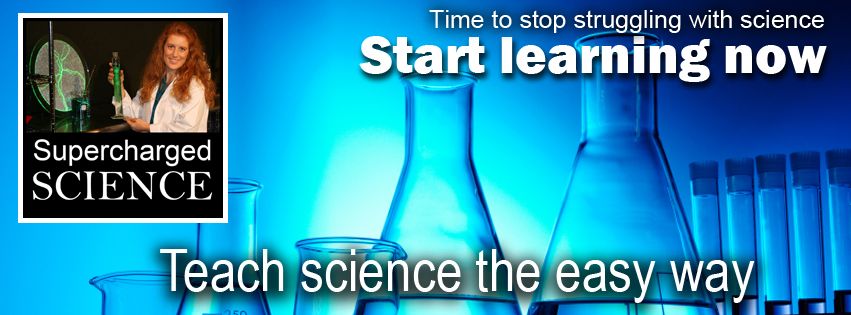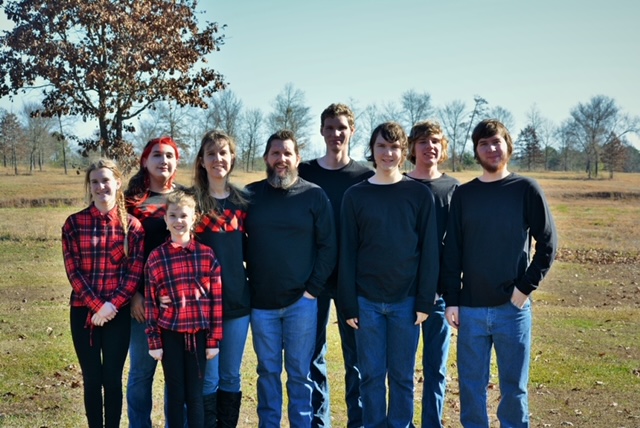
Over the last several weeks, we have had the opportunity to review a really fun science program from Supercharged Science, e-science online learning program.

Supercharged Science puts the fun back in to science. Most traditional science programs have you learn science mainly by reading from a textbook and then doing an experiment or two if you have time. E-science recommends starting off with an experiment to ignite your child's interest and then when they are interested and want to know what's going on, you add in the academic readings and lesson videos. The e-Science online learning program for children ages K-12 is designed as a complete hands on science curriculum for homeschoolers, taught by a rocket scientist that used to work at NASA and teaches in a university. The main parts to the program include: videos of teaching real science, textbook reading to support the videos, hands on experiments with videos to guide you through step by step, homework exercises and quizzes, a place to ask Aurora questions and get answers, and live tele classes every few weeks. The e-Science program doesn't discuss Creation or evolution, they stick to the physics of what is going on and how to build the projects.
Topics covered by the e-Science program
Unit Zero- Overview of e-Science
The Scientific Method- tips and tricks
Unit One: Mechanics-force, gravity, friction
Unit Two: Motion-Velocity and Acceleration
Unit Three: Matter-Atoms, Density, Solids
Unit Four: Energy 1- Pulleys and Levers
Unit Five: Energy 2-Potential and Kinetic Energy
Unit Six: Sound- Vibrations and Resonance
Unit Seven: Astrophysics-Astronomy, Particle Physics, and Relativity
Unit Eight: Chemistry 1-Molecules, Atoms, and Chemical Kinetics
Unit Nine: Light-Light Waves, Photons, & Lasers
Unit Ten: Electricity-Circuits and Robotics
Unit Eleven: Magnetism-Permanent Magnets and Electromagnets
Unit Twelve: Alternative Energy-Solar Cells, Wind Power, Fuel Cells
Unit Thirteen: Thermodynamics- Temperature and Heat
Unit Fourteen: Electronics-Breadboards, PCBs, Analog and Digital Circuits
Unit Fifteen: Chemistry 2-Reactions, Bonds, Redox, Acids and Bases, Nuclear
Unit Sixteen: Life Science 1-Living Organisms, Cells, Genetics, Microscopes
Unit Seventeen: Life Science 2- Prokaryotes, Plants, Fungi and Protists
Unit Eighteen: Biology 1-Invertebrates, Fishes, Mammals, reptiles, and Birds
Unit Nineteen: Biology 2-Skin, Bones, Muscles, Cardiovascular
Unit Twenty Earth Science (coming soon)-
Award Winning Science Fair Projects-hovercraft, fruit batteries, light speed, and more
Mathemagic- Unique lessons in math
Parent Resources-tips and tricks for teaching science
Science e-Camp-summer camp you can do year round at home
The K-8th grade plan costs $37 per month and the K-12 plan costs $57 per month. This price includes all of the children in your household, you do not need to purchase a membership for each child. You get unlimited access as long as you are a member and can work through the lessons you choose at your own pace. You can access the lessons for 30 days with a full money back guarantee if you decide it doesn't work for your family. You have the ability to cancel your membership at any time. To sign up, click here.
You will need some supplies to do the experiments. It is suggested that you start with experiments that use supplies that you have around the house and then add more as your child is interested. There are shopping lists for each unit. You do NOT have to do all of the experiments for each section.
In addition to using the program as a stand alone science curriculum, you can also use it alongside of the curriculum you already use. They have a conversion chart for the most requested texts from members so you can match up the textbook with the experiments and activities from eScience. You can find it here.
I used e-Science with my 16 year old daughter to make Chemistry a bit more fun for her. She has been learning Chemistry from reading a text, and she really hasn't enjoyed it very much. So, we started working through Unit 8 Chemistry One. We started off by watching the Intro video on the Unit 8 page and reading through the information. Then we went right to the Molecules Experiments and Videos. We read through the information on each experiment and completed the experiments that we had the supplies for or were things we could easily grab at Walmart, and watched the demonstrations for the other experiments. Then we went through the textbook reading and exercises. Then we did the same thing for the second topic under Chemistry One, Chemical Kinetics.
I didn't get pictures of everything, but here are photos of a few of the experiments we did.
 |
| cutting red cabbage to use as an indicator |
 |
| adding the indicator to paper cups |
 |
| testing different things to see if they are acids or bases |
 |
| making a scale |
 |
| testing the weight of Carbon Dioxide |
I couldn't leave the younger children out when Chelsea was getting to do some really fun science activities. So the boys (11,9,7,6), Lily (4), and I had a chance to try some fun science experiments too! We started off with some of the experiments under the getting started section. This section uses really common household items and easy experiments to get kids interested in science. After doing a few of those, we started working on Unit 16 Life Science 1.
Here are a few photos of some of our experiments.
 |
| making a hovercraft |
 |
| making a hovercraft |
 |
| testing it out |
 |
| making a flying contraption |
 |
| testing out a flying contraption |
 |
| setting up a celery stalk water race |
To start with, one of the things I love most about e-Science is the enthusiasm of Aurora as she teaches. She loves what she does and that is something that clearly comes across through her videos. I love the idea of not just teaching kids science, but making them interested in what is going on through fun hands on experiments. I love the e-Science is a complete curriculum that can work for all different kinds of learners: auditory, visual, kinesthetic, and read-write. I love that you can pick and choose the experiments that you want to do because there are so many to choose from! I love that the experiments are shown step by step and then an explanation of what is going on is given.
My children were hooked as soon as they saw the Microwaving soap experiment. The flying contraption was the easiest science experiment I have ever done and they played with those for hours!I thought it was really interesting too that after they watched their big sister doing the experiment on weighing carbon dioxide and they saw the baking soda/vinegar reaction their curiosity was piqued and they began to try other experiments with vinegar and baking soda changing the amounts of each to see what would happen. Completing and seeing the experiments really made Chemistry more relevant to Chelsea. I wish I had been using eScience with her all year long!
Older children can easily go through the sections step by step on their own, although depending on the topic they may need some adult supervision for some of the experiments. Younger children will need to be led through what to do, but how much time you need to spend each day or week will depend on your schedule and interest. The program is very flexible.
There is so many great things on the website, that I think it is a little overwhelming. After finishing some of the getting started experiments, I didn't really have a specific topic in mind, I just wanted some easy experiments for the boys to be able to do, and I really didn't even know where to begin there are so many topics to choose from! I wish there was a way you could search and find easily experiments for K-8 and then 9-12 without having to go through each section.
To see what other Crew Mates had to say, click on the banner below.




No comments:
Post a Comment